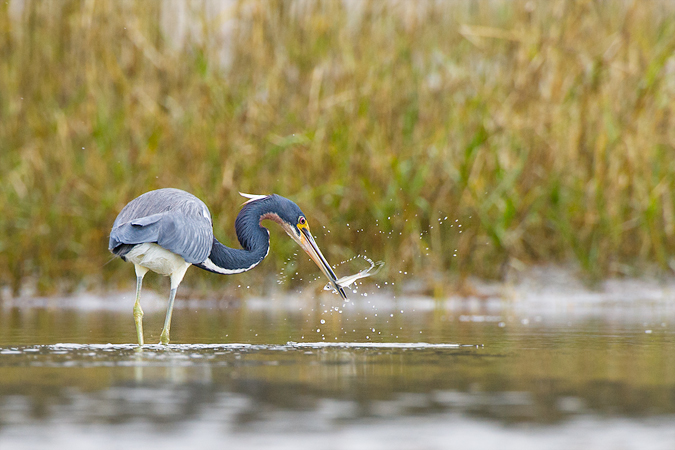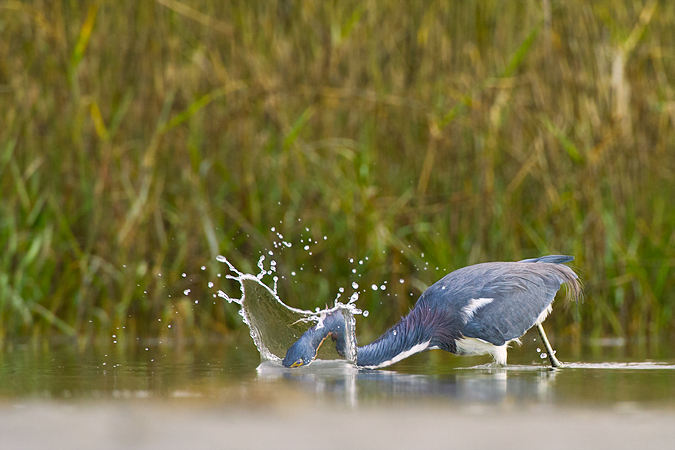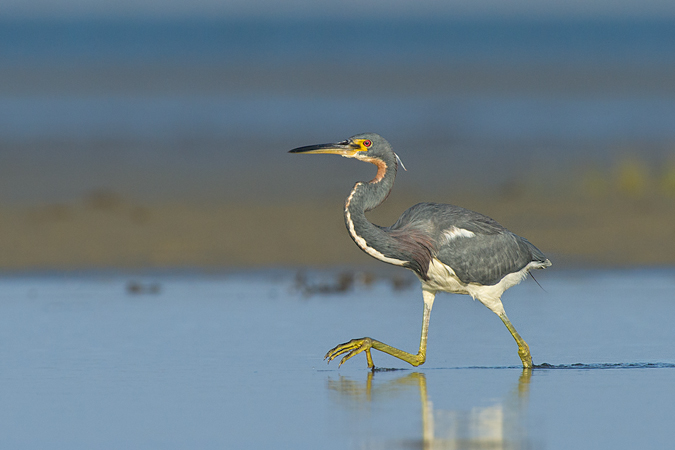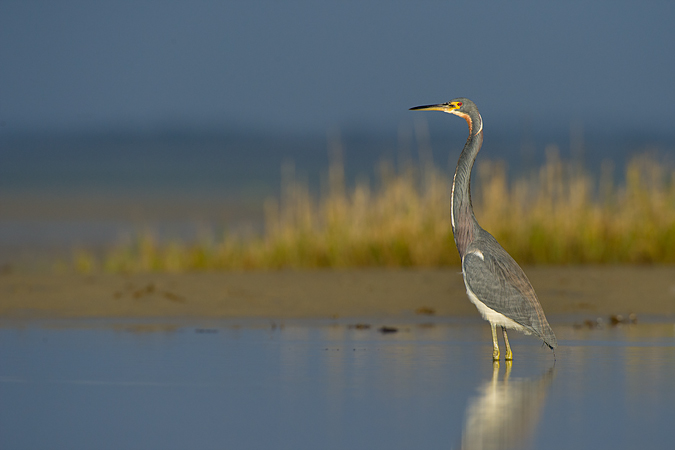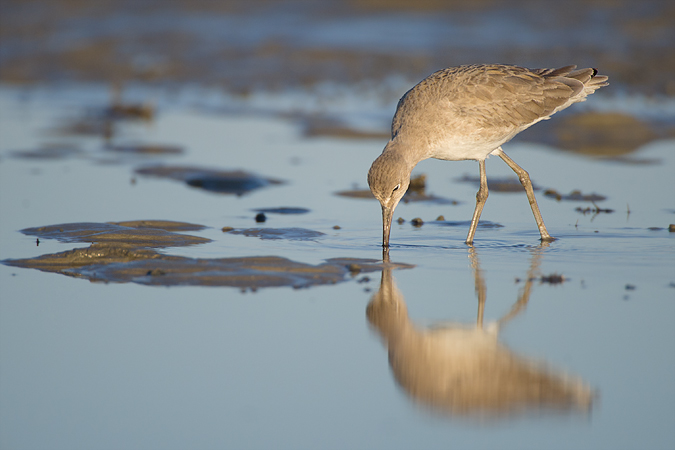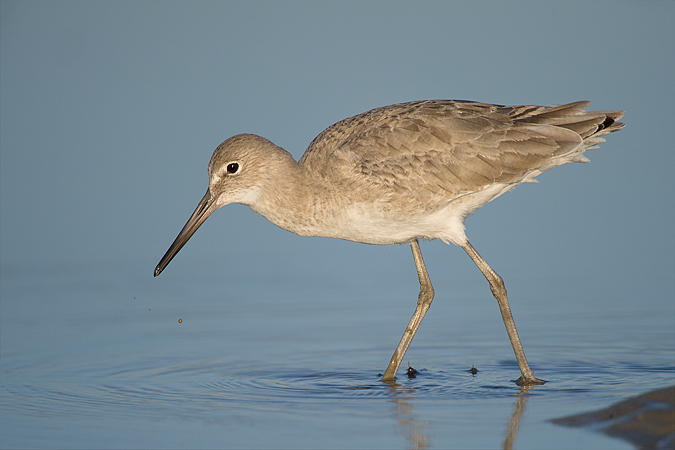After some modest success with a Bufflehead a couple of days ago, I decided to make another try of it. I don’t like using blinds, but skittish ducks are one of the exceptions that I make. Today I was out in the blind before sunup waiting for the ducks. Blinds have two major problems: your visibility is greatly reduced and moving is difficult or impossible. The ducks came to the pond I was waiting at but they spent most of their time on the far side of the pond. There was one male who seemed to have a harem of nearly 10 females following him around. These are three of the females who separated from the rest of the group for a bit.
I am sure that ducks know when it is hunting season. Ok, maybe I’m going a bit far, but they do know when people are a threat. Anytime after the duck hunting season starts to a little bit before it ends, the ducks are especially skittish. But it is still possible to get close if you are careful and use knowledge of the birds. I just had been having a bit of bad luck. Today I started out to try for some ducks again. Before I got to some of the duck habitat, I stopped for an attractive female Red-winged Blackbird that was perching up on some cattails.
It was long wait, but in the end I finally had some luck with the ducks. A beautiful male Bufflehead spent some time right in front of me. They can be a hard bird to expose for since you need some sunlight to bring out the iridescence. They also have both a lot of highlight detail in the bright white spots on their head and body as well as detail in the blacks. You need pretty soft light for this. Fortunately conditions were good and the Bufflehead was magnificent.
I know I say this a lot, but it still bears repeating. When you have a good thing going on, milk it for all it is worth. Don’t feel like you have all the photos you can get after 20 minutes, keep at it. This is especially important with wildlife. First of all, the great opportunities don’t come around every day. Secondly, as you spend more time with them, wildlife gets even more at ease with you and will eventually ignore you showing you all kinds of wonderful behaviors. This was what happened today.
It started when I first saw this great Tricolored Heron. It was actively fishing in the small pools left behind by the tides. The fish trapped in these pools may have avoided the predatory fish of the ocean, but they had to contend with this hungry heron instead. I lost track of how many fish the heron consumed while I was photographing it.
When I started, the light was pretty lackluster. Gradually the dense overcast sky began to open up but I was on the wrong side of the bird. A long crawl through the mud around to the other side of the bird was worth it. If you have to get around a bird, even a cooperative one like this, you have to make a wide circle around it instead of just crossing to where you want to go.
The light was fantastic. The weather couldn’t make up its mind. It kept going from thick cloud cover, sometimes with a little bit of rain, to opening up to allow a few beams of light in. This is some of the most dramatic lighting that you can find. Changes in lighting are yet another reason to spend some time with a subject.
In the end, the array of behaviors from this one bird was great. Hundreds of photos of it hunting for fish, striding through the water, posing for classic portraits, preening, fluffing its feathers, and flight shots. All this from a single bird over the course of an hour and a half. When you move from subject to subject you just don’t get these kind of possibilities. So next time spend some time with a good subject and you’ll be sure to be rewarded for your patience.
After a few days of trying to photograph some ducks and having nothing to show from it, I gave up. Just kidding, but it almost felt like that. When I returned to South Carolina, it had been a month or longer since I had been to most of the places that I photograph at. A lot can change over the course of a month especially as it went from fall to winter. So I wanted to check out each location to get a general feel. Next on the list was going back to my favorite shoreline haunt, Fish Haul Creek. Fish Haul Creek has a few year-round residents as well as some species that come just for the winter. I spent the afternoon concentrating on the plainer winter visitors. I started with the western sub-species of Willet.
It’s easy to overlook this gray bird, especially since they are almost everywhere but they are pretty cool if you watch them. In South Carolina, we have Willet all year long. But they’re not the same birds. The birds in the summer are the smaller, browner, heavily streaked eastern subspecies. These birds leave in the fall to travel down to South America for the winter months. The birds we have in the winter are all the western subspecies that come to winter here. The two subspecies have so many differences that I wouldn’t be surprised if they are split into full species at some point in the future. I never knew about the two subspecies until I started watching the Willets after moving down here.
Another common bird that overwinters on the mud flats here is the Dunlin. This tiny bird is a fraction of the Willet’s size. They come typically in large flocks that feed by probing the mud. By keeping still, a large flock walked right around me. It’s quite the experience to have hundreds of these little birds on all sides of you. At the end of the flock, I was able to isolate a few of the stragglers like this one.




